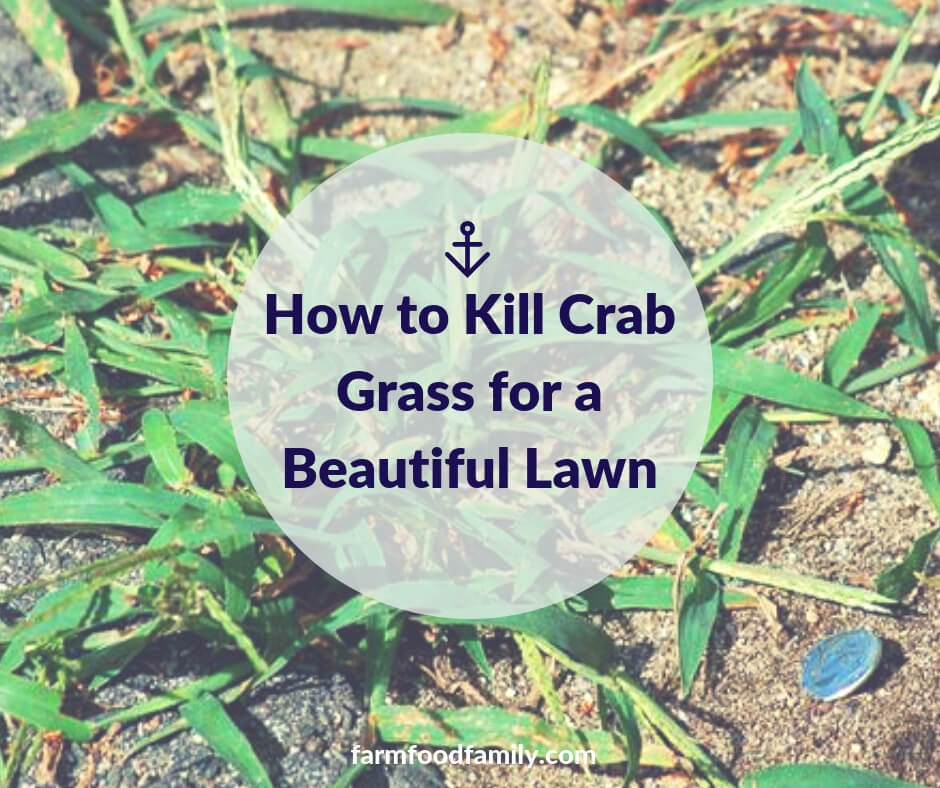Every homeowner should take steps to kill crab grass in order to maintain a beautiful lawn. Herbicides are a simple way to kill the weed and prevent its recurrence.
Killing crab grass (also known as “finger grass”) is an easy process if it is done properly. Left to its own devices, this unattractive weed can threaten the health and beauty of a lawn.
Homeowners may opt for varying methods of controlling crab grass depending on the scope of the problem.
Related: 16 Weeds That Look Like Grass
What is Crab Grass?

Crab grass is a variety of rapidly spreading weed that grows throughout the U.S. and some parts of Canada. During the warmer months, crab grass plants can spread over 100,000 seeds.
These weeds choke out the turf grass and once established, can decimate a lawn or garden leaving bare patches and dead grass.
Pre-Emergence and Post-Emergence Herbicides
Herbicides are the preferred method to get rid of crab grass. The goal of herbicides is to kill the crab grass without harming the surrounding plants. When purchasing an herbicide, ensure that it is specifically formulated for killing crab grass. All-purpose herbicides may hurt the lawn.
There are two types of herbicides to use to kill crab grass: Pre-emergence and Post-emergence. Pre-emergence herbicides should be applied prior to the appearance of crab grass in the spring while post-emergence herbicides serve to kill the weeds that have already sprouted.
Both liquid and granulated herbicides are equally effective. Bruce Spangenberg, the chairman of the University of Illinois horticulture department, cautions that homeowners should refrain from using pre-emergence herbicides immediately after planting fresh grass seed.
How to Apply Herbicide to Kill Crab Grass

If applying pre-emergence herbicide:
- Wait until the weather begins to warm up in the spring but before crab grass sprouts to apply the herbicide.
- Apply the poison uniformly throughout the yard.
- Water the lawn after applying a granulated herbicide to help it soak into the soil.
If applying a post-emergence herbicide:
- Apply the herbicide during a time when dry weather is expected for several days. Rain will wash away the poison and it will be less effective.
- Spread the herbicide around the areas that are most affected by crab grass.
- Reapply after one week to kill germinating crab grass that may have missed the initial application.
- Remove dead clumps of crab grass to encourage the growth of turf grass in those areas.
- Reseed the turf in areas left bare by the weeds.
Problems With Herbicides
Occasionally after applying an herbicide an individual may notice the turf grass turning brown. This is a result of over-application.
Turf grass that has been damaged by herbicides may be saved by frequent, deep watering of the lawn. This washes away any residual poisons and helps cleanse the herbicide from plant roots.
Purchasing herbicide specifically formulated to kill crab grass only will reduce the risk of damaged turf grass.
Some herbicides contain poisons that can be harmful to both humans and animals. Purchasing eco-friendly herbicides is beneficial for homeowners with pets or children.
An Alternate Method For Killing Crab Grass
Herbicide may be effective, but it is not the only option homeowners have for dealing with these rapidly spreading weeds.
If the crab grass infestation is minimal, an individual may opt to pull the existing weeds and allow the roots to dry out. This will kill the plant and prevent it from producing seeds.


